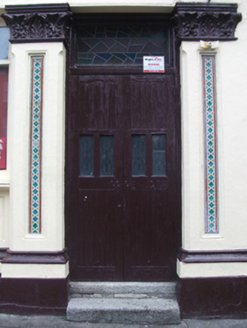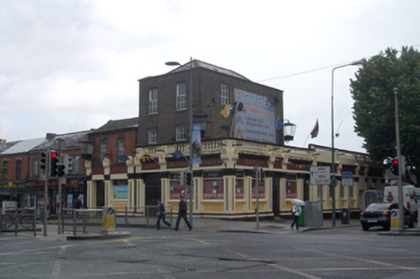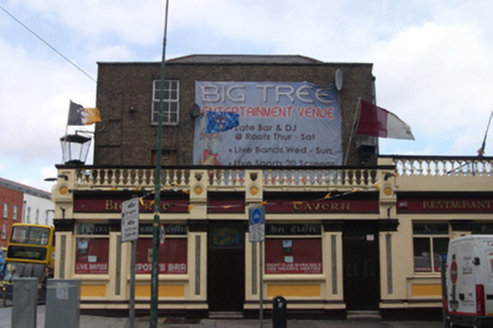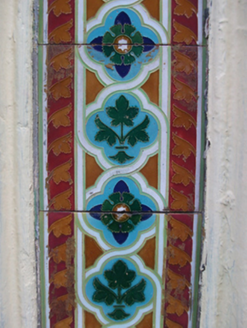Survey Data
Reg No
50010711
Rating
Regional
Categories of Special Interest
Architectural, Artistic, Historical, Social
Original Use
House
Historical Use
Shop/retail outlet
In Use As
Public house
Date
1820 - 1880
Coordinates
315836, 235787
Date Recorded
06/09/2011
Date Updated
--/--/--
Description
Corner-sited public house, formerly pair of three-storey houses, built c.1825, incorporating two-bay two-storey house to north, and with projecting flat-roofed public house addition to both elevations added c.1870. Hipped natural slate roof to former houses with clay ridge tiles behind parapet wall with granite coping. Yellow brick walls laid in Flemish bond, red brick to two-storey section. Gauged brick flat-arched window openings with patent rendered reveals, granite sills and replacement timber windows. Decorative painted rendered pub-front spanning both elevations, including single-storey projection to south extending east along North Circular Road. Pub-front comprises series of fixed display windows on moulded sills and panelled stall risers, each flanked by robust stop-chamfered pilasters having ceramic tiled panels, stiff-leaf capitals and surmounted by segmental-headed gablets with rosettes. Deep moulded plinth course spans entire shopfront with render fascia between gablets all surmounted by balustraded parapet. Two square-headed door openings to each elevation flanked by pilasters, as above with replacement doors.
Appraisal
As a pair of late Georgian former houses with Victorian ground floor additions, this public house is a local landmark on a prominent site rising above the neighbouring terrace, adding considerable visual appeal to this busy junction. Positioned on the corner of North Circular Road, which was laid out by the 1780s, and Dorset Street Lower, an ancient street formerly known as the Great Drogheda Road (later as Drumcondra Lane for its path north out of the city), a pub or inn has reportedly occupied this site since mediaeval times. Huguenot settlers are also meant to have created Ireland’s first Florists’ Club and held its meetings at the Rose Tavern, on part of the site now occupied by this public house and supposedly established in 1453, to which a sign on the extant shopfront now refers. The name 'Big Tree Inn' is purported to come from Big Tree Lane, a former nearby site where five men, captured by militia in the 1798 Rebellion, were hung. The building once operated as a grocery and served as the Petty Sessions Courthouse for Drumcondra in the late Victorian period. The evident decorative quality of the pub-front adds considerable visual interest to the streetscape.







